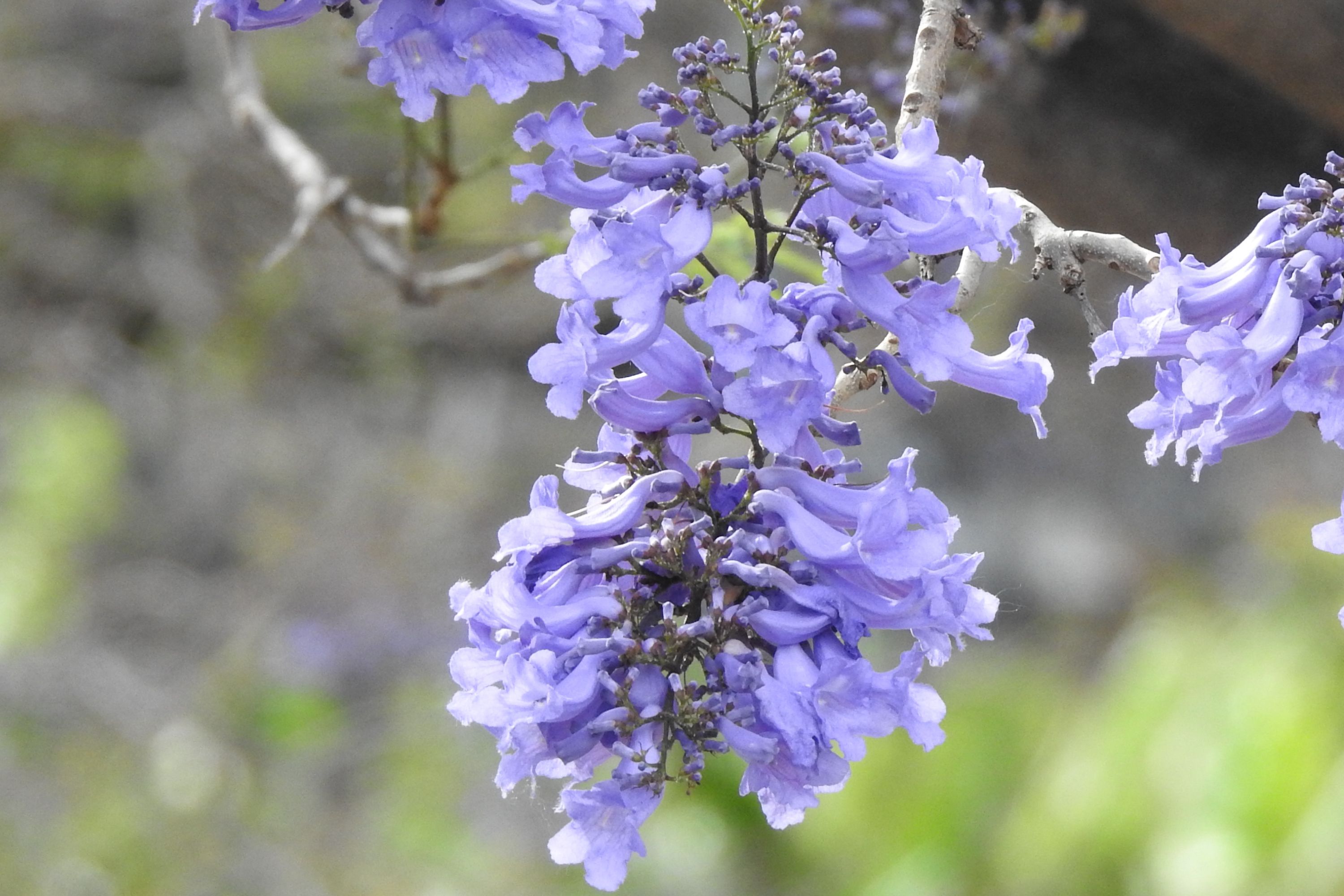Black poui
(Jacaranda mimosifolia)

Description
Jacaranda mimosifolia is a sub-tropical tree native to south-central South America that has been widely planted elsewhere because of its attractive and long-lasting violet-colored flowers. It is also known as the jacaranda, blue jacaranda, black poui, Nupur or fern tree. Older sources call it J. acutifolia, but it is nowadays more usually classified as J. mimosifolia. In scientific usage, the name "jacaranda" refers to the genus Jacaranda, which has many other members, but in horticultural and everyday usage, it nearly always means the blue jacaranda. In its native range in the wild, J. mimosifolia is listed as Vulnerable by the IUCN. The tree grows to a height of up to 20 m (66 ft). Its bark is thin and grey-brown, smooth when the tree is young but eventually becoming finely scaly. The twigs are slender and slightly zigzag; they are a light reddish-brown. The flowers are up to 5 cm (2 in) long, and are grouped in 30 cm (12 in) panicles. They appear in spring and early summer, and last for up to two months. They are followed by woody seed pods, about 5 cm (2 in) in diameter, which contain numerous flat, winged seeds. The blue jacaranda is cultivated for the sake of its large compound leaves, even in areas where it rarely blooms. The leaves are up to 45 cm (18 in) long and bi-pinnately compound, with leaflets little more than 1 cm (0.4 in) long. There is a white form available from nurseries. The unusually shaped, tough pods, which are 5 to 8 cm (2 to 3 in) across, are often gathered, cleaned and used to decorate Christmas trees and dried arrangements. The blue jacaranda has been cultivated in almost every part of the world where there is no risk of frost; established trees, however, tolerate brief spells of temperatures down to around −7 °C (19 °F). In the US, in areas where winter temperatures can dip to −12 °C (10 °F) for several-hour periods, the mature tree survives with little or no visible damage. Even when young trees are damaged by a hard frost and suffer dieback, they will often rebound from the roots and grow in a shrub-like, multi-stemmed form. However, flowering and growth will be stunted if the jacaranda is grown directly on the California coast, where a lack of heat combined with cool ocean winds discourages flowering. This plant has won the Royal Horticultural Society's Award of Garden Merit. The jacaranda is regarded as an invasive species in parts of South Africa and Queensland, Australia, where it can out-compete native species.
Taxonomic tree:







